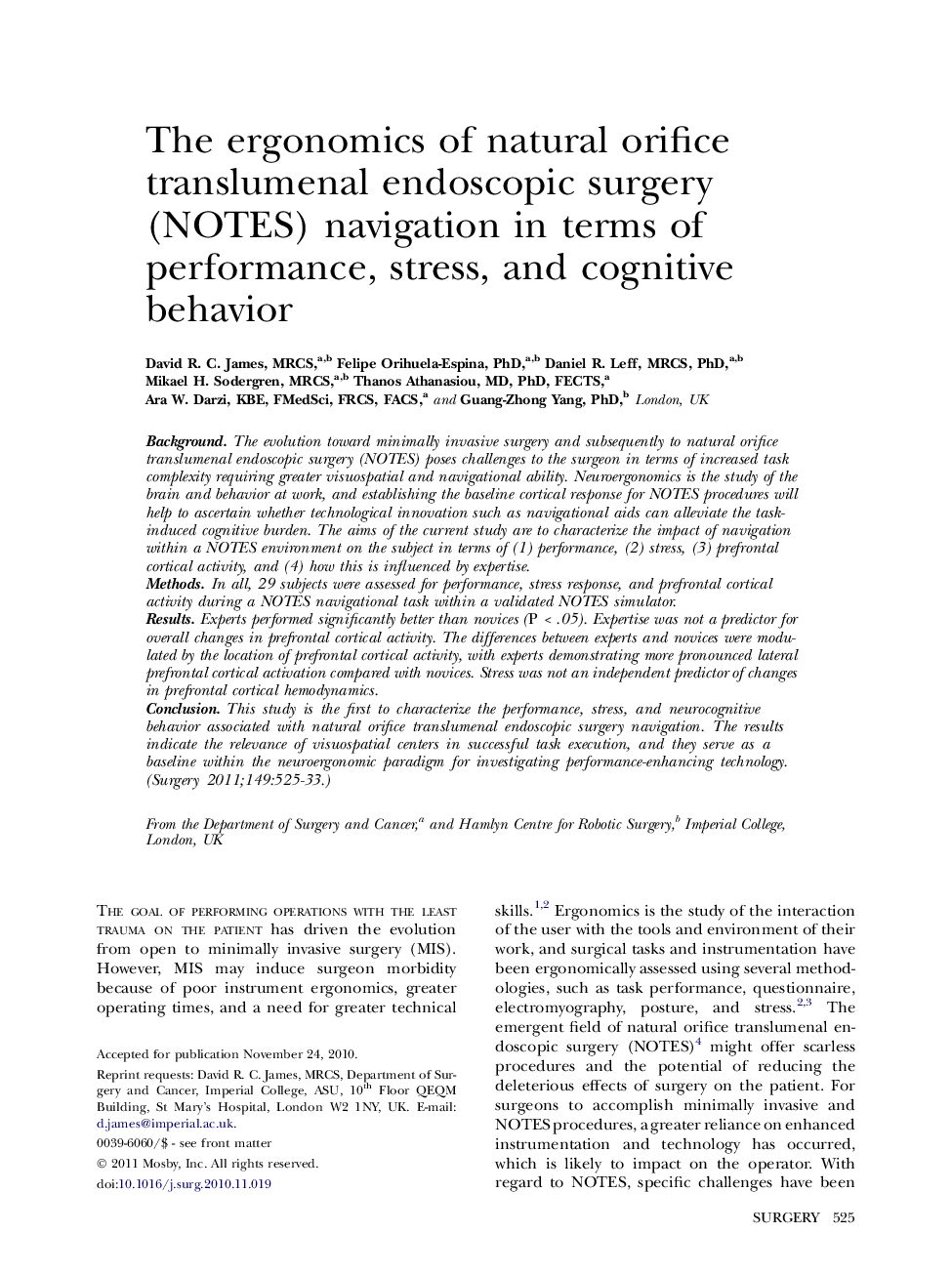| Article ID | Journal | Published Year | Pages | File Type |
|---|---|---|---|---|
| 4308888 | Surgery | 2011 | 9 Pages |
BackgroundThe evolution toward minimally invasive surgery and subsequently to natural orifice translumenal endoscopic surgery (NOTES) poses challenges to the surgeon in terms of increased task complexity requiring greater visuospatial and navigational ability. Neuroergonomics is the study of the brain and behavior at work, and establishing the baseline cortical response for NOTES procedures will help to ascertain whether technological innovation such as navigational aids can alleviate the task-induced cognitive burden. The aims of the current study are to characterize the impact of navigation within a NOTES environment on the subject in terms of (1) performance, (2) stress, (3) prefrontal cortical activity, and (4) how this is influenced by expertise.MethodsIn all, 29 subjects were assessed for performance, stress response, and prefrontal cortical activity during a NOTES navigational task within a validated NOTES simulator.ResultsExperts performed significantly better than novices (P < .05). Expertise was not a predictor for overall changes in prefrontal cortical activity. The differences between experts and novices were modulated by the location of prefrontal cortical activity, with experts demonstrating more pronounced lateral prefrontal cortical activation compared with novices. Stress was not an independent predictor of changes in prefrontal cortical hemodynamics.ConclusionThis study is the first to characterize the performance, stress, and neurocognitive behavior associated with natural orifice translumenal endoscopic surgery navigation. The results indicate the relevance of visuospatial centers in successful task execution, and they serve as a baseline within the neuroergonomic paradigm for investigating performance-enhancing technology.
